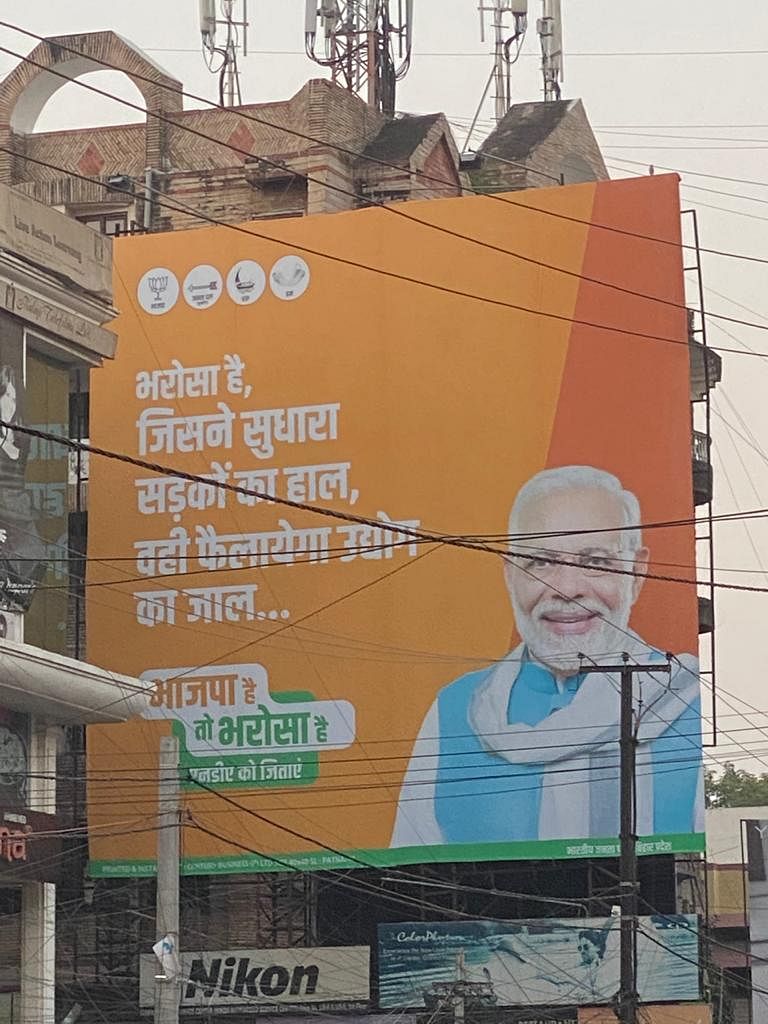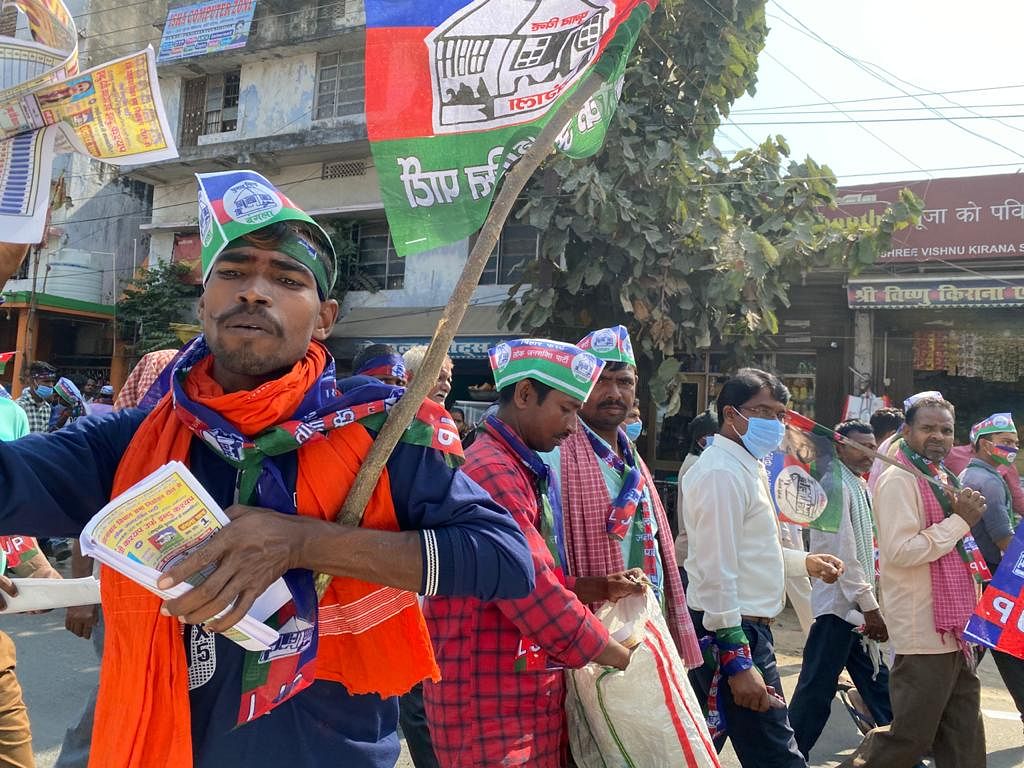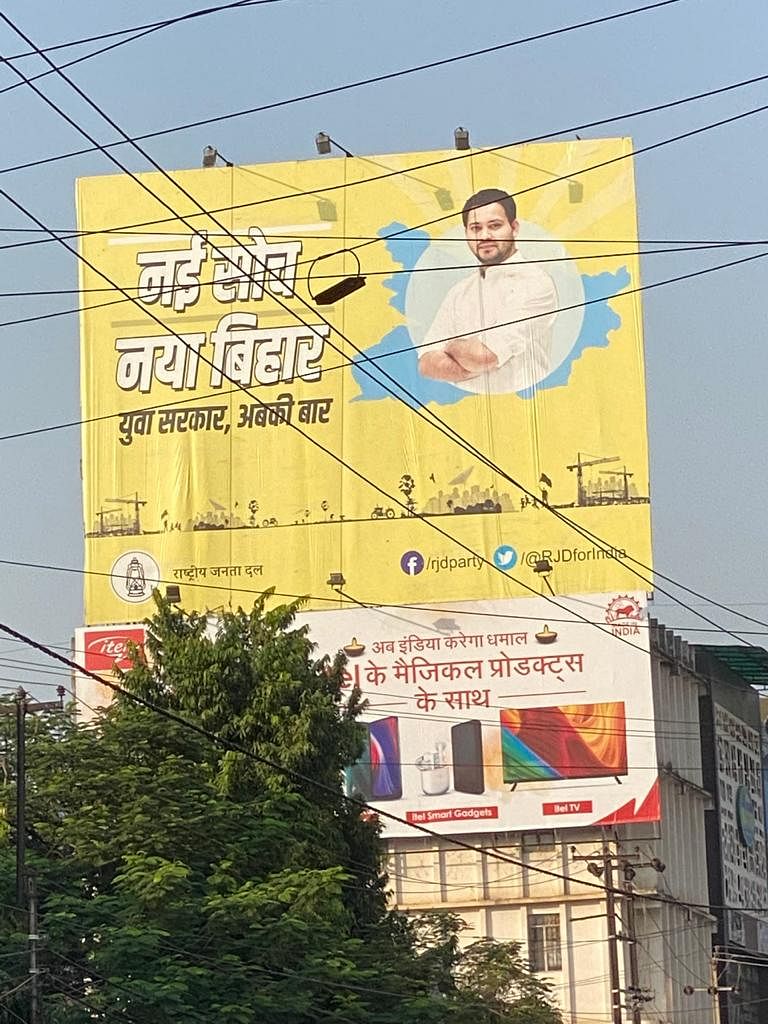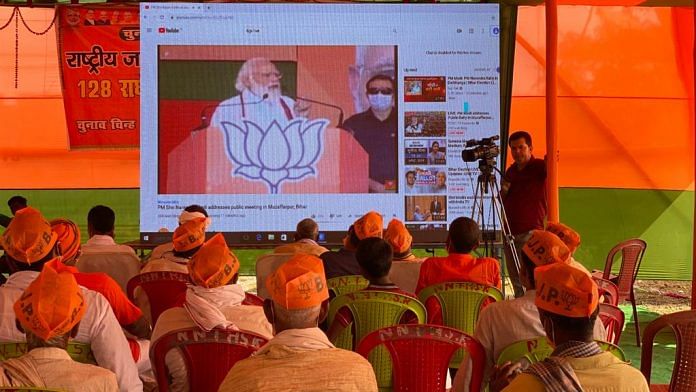In Jehanabad town, people bristle at the mention of Nitish Kumar. Chirag Paswan’s Lok Janshakti Party has a Bhumihar candidate. You meet a surprisingly high number of Bhumihars voting for her. They are traditionally Bharatiya Janata Party voters.
When Kurmis, people of Nitish Kumar’s caste, tell you they want change, you know that the Janata Dal (United) is in serious trouble.
Even the most dispassionate voters here will tell you it’s a three-cornered contest between the LJP, the JD(U) and Tejashwi Yadav’s Rashtriya Janata Dal (RJD). You hear this repeatedly: trikoniya ladayi hai.
From Jehanabad, we go to Bodh Gaya, the land of Buddha’s enlightenment.
Here, too, people want badlav, or change. But the anger is somewhat subdued. We meet Mahadalit voters here voting for the BJP, a contrast to Mahadalit voters in JD(U) seats voting for the LJP or the RJD.
There is no LJP candidate on BJP seats like Bodh Gaya, no three-way contest. The choice is between Narendra Modi and Tejashwi Yadav. Voters don’t get to see Nitish Kumar’s face or his party’s Arrow symbol. Even the ones who would like to see him go are visibly less angry.
The JD(U) is contesting 115 seats. The BJP is contesting 110 seats. They are both partners in the National Democratic Alliance (NDA) but on the ground, these two sets of seats seem to be witnessing two different, parallel campaigns. It is entirely possible that the two sets of seats may produce entirely different, contrasting results: one routing the incumbent, another backing it.
Also read: ‘Nitish hatao’ chorus grows louder in Bihar
BJP campaign minus Nitish
Given that Nitish Kumar is the face of the NDA in Bihar, the incumbent chief minister and the chief ministerial candidate, the BJP campaign should also have been around him and his achievements. Instead, realising Nitish Kumar’s unpopularity, the BJP has only distanced itself further from him.
With the JD(U) doing poorly, this is essentially an RJD versus BJP battle. They both hope to emerge as the single-largest party in the new Bihar assembly on 10 November. You can see this contest in the Patna skyline, with Modi hoardings interspersed with Tejashwi’s promise of change.
One hoarding in central Patna reads, “Bharosa hai, jisne sudhara sadkon ka haal, wahi failayega udyog ka jaal. (Trust that the Ken who improved roads will also spread the industrial net).”

Nitish Kumar’s worst critics will admit he has built and improved roads across Bihar. But here is Narendra Modi taking credit for that.
It is a telling comment on how the BJP has decided to fly solo, splitting this election into two, leaving the JD(U) to fend for itself.
By distancing itself from the JD(U), the BJP is not only able to avoid getting impacted by the backlash against Nitish Kumar but even exploit it. The widespread belief that the LJP has been propped up by the BJP is assuring its voters that the party shall likely bring about the change they are seeking.
The loud symbols of change are Tejashwi Yadav and Chirag Paswan, but many voters in seats with a BJP candidate are convinced it is the BJP that will form the government.

Also read: In his first Bihar rally, Narendra Modi shows Nitish Kumar his place
‘Lalu fear’ on BJP seats
This is not to say the BJP is not facing any flak for backing Nitish Kumar. The sharpest polarisation this election — that of a generation divide — is visible even in BJP seats.
In Gurua seat in Gaya, we are told the Dangi community, an Economically Backward Class (EBC), are swing voters. We go to a Dangi-dominated village and find young men talking favourably about Tejashwi Yadav. They are attracted by his promise of jobs, change, and a fresh face. But the older people of the same community dread the return of RJD. “If Tejashwi wins, we will face rape in the open. We won’t be able to step out after 4 pm. Nitish may not be able to give us good education and jobs but at least we can live in peace.” They are all over 40.
That’s another difference you notice on BJP seats: people talking about the fear of the return of Lau Yadav’s ‘jungle raj’ days. The BJP, with its well-oiled party machine, the cadres and the WhatsApp groups, is able to spread the fear of ‘jungle raj’. We hear voters, even EBC swing voters, speak of ‘jungle raj’, mainly in BJP constituencies.
In JD(U) constituencies, it looks like a bad attempt at blackmail, if party workers are even able to make the point.
The youth voter hasn’t seen the ‘jungle raj’ years, so the BJP is patiently telling them what it was like. Even Narendra Modi’s speeches dwell on it at length. With rise in crime under Nitish Kumar’s watch, he doesn’t sound very convincing when warning of ‘jungle raj’ in his speeches.
Also read: The real Bihar election will begin after the results
Arithmetic versus Chemistry
The split parallel elections make it doubly harder to speculate on the eventual result. If we go by arithmetic, it is with the NDA, particularly the BJP. Looking at seats in terms of the Lok Sabha results or the caste calculus, the NDA is so far ahead of the United Progressive Alliance (UPA) that it should be able to sail through even a bad election. The youth vote, 18-25 years of age, it must be said, is not large enough to change the election all by itself, coupled with the fact that the number of first-time registered voters (in the age group of 18-19) has come down by half this time as compared to 2015.
Yet, the ‘chemistry’ is increasingly with Tejashwi. The sentiment of change, if it keeps growing stronger, could affect the BJP seats too. Had Tejashwi Yadav started his campaign three months earlier, there would have been no contest.

At the entrance of the temple complex in Bodh Gaya, we ask a shopkeeper who he thought was winning the Bihar 2020 election. “Don’t you watch TV?” he asks. “Don’t you know which way the hawa is blowing?” No we don’t. We press harder for a response. He wags his finger at a badge in a corner of his shop, next to the packet of Lays chips. It’s an RJD badge, with a photo of Tejashwi Yadav and his Laltain symbol.
What’s most surprising is the shopkeeper’s caste. He’s a Sahu Baniya, the same caste as BJP leader Sushil Kumar Modi, currently the state’s deputy chief minister. This is a community the BJP Is identified with. If there are Baniyas putting up Tejashwi badges on their shopfronts, the BJP can’t take its arithmetical advantage for granted.
The author is contributing editor to ThePrint. Views are personal.



